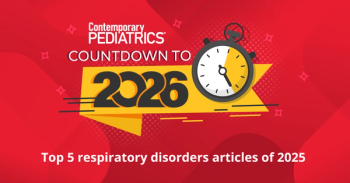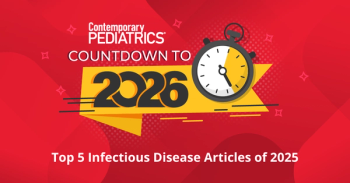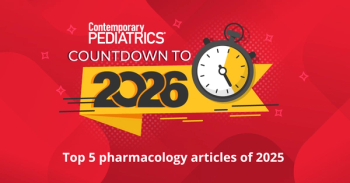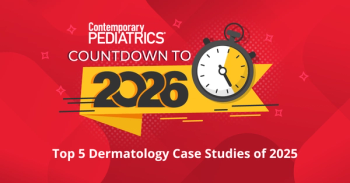
- Consultant for Pediatricians Vol 5 No 7
- Volume 5
- Issue 7
Natal Teeth
A 9-day-old boy was brought in for routine care. His mother had noticed these teeth at the child's birth. There were no other remarkable physical findings. Natal teeth occur in 1:700 to 1:6000 births, write Howard Fischer, MD, and Ahdi Amer, MD, of Children's Hospital of Michigan in Detroit. Such teeth are most often seen in the mandibular incisor area, often in pairs.
A 9-day-old boy was brought in for routine care. His mother had noticed these teeth at the child's birth. There were no other remarkable physical findings. Natal teeth occur in 1:700 to 1:6000 births, write Howard Fischer, MD, and Ahdi Amer, MD, of Children's Hospital of Michigan in Detroit. Such teeth are most often seen in the mandibular incisor area, often in pairs. They are not extra, or supernumerary, but are part of the primary dentition in more than 90% of affected patients. The teeth are often mobile because of poor root development. The crowns often show incomplete enamel development.1
Natal teeth may be found in various syndromes: Ellis-van Creveld syndrome (chondroectodermal dysplasia), Jadassohn-Lewandowski syndrome (pachyonychia congenita), and Hallerman-Streiff syndrome (oculomandibulofacial syndrome with hypotrichosis).2
It is preferable to maintain these teeth, which allow the dental arch to develop normally.3 Sometimes they spontaneously exfoliate. Highly mobile teeth may be aspirated and are therefore usually extracted.
Julius Caesar, Hannibal, and Napoleon all had natal teeth.4
References:
STRONG>References:
1.
Dilley DC, Siegel MA, Budnick S. Diagnosing and treating common oral pathologies.
Pediatr Clin North Am.
1991;38:1227-1264.
2.
Leung AK. Natal teeth.
JAMA.
2006;98:226-228.
3.
Bernick SM. What the pediatrician should know about children's teeth. II. Natal and neonatal teeth.
Clin Pediatr (Phila).
1970;9:487-490.
4.
Morris D.
Babywatching.
New York: Crown Publishing Group Inc; 1992.
Articles in this issue
over 19 years ago
Photoclinic: Cephalhematomaover 19 years ago
Pediatrics Update: Mumps: Making Headline Newsover 19 years ago
Case in Point: Methicillin-Resistant Staphylococcal Pneumoniaover 19 years ago
Musculoskeletal Clinics: Foot Pain After Skateboarding Accidentover 19 years ago
6-Month-Old Girl With Genital Massover 19 years ago
Sexually Transmitted Diseases:A Photo Quizover 19 years ago
Photoclinic: Eosinophilic Granulomaover 19 years ago
Pediatric ECGs: A Primary Care Primerover 19 years ago
Photoclinic: Spontaneous Pneumothoraxover 19 years ago
Shades of GrayNewsletter
Access practical, evidence-based guidance to support better care for our youngest patients. Join our email list for the latest clinical updates.




